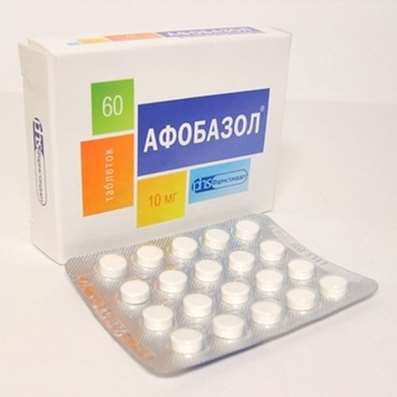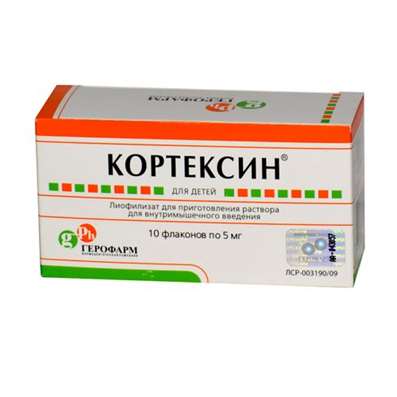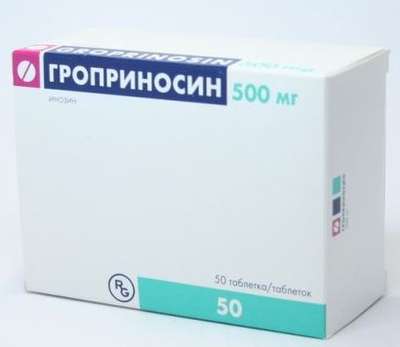Instruction for use: Timolol (Timololum)
I want this, give me price
chemical name
(S) -1- (tert-Butylamino) -3 - [(4-morpholino-1,2,5-thiadiazol-3-yl) oxy] -2-propanol (maleate or hemihydrate)
Pharmacotherapeutic group:
Beta-blockers
Ophthalmic tools
The nosological classification (ICD-10)
G25.0 Essential tremor
shake, Generalized muscle tremors, Essential tremor family, essential tremor, Tremor idiopathic, Tremor idiopathic benign, Tremor hereditary, Essential tremor is benign
G43 Migraine
The pain of migraine, Migraine, hemiplegic migraine, Migraine headache, A migraine attack, Continuous headache, hemicrania
H40.1 Primary open-angle glaucoma
open-angle glaucoma, Open-angle glaucoma, Primary glaucoma, pseudoexfoliation glaucoma, Elevated IOP
H40.4 Glaucoma secondary to inflammatory diseases of the eye
Glaucoma uveal, Uveal secondary glaucoma
H40.5 Glaucoma secondary to other eye diseases
The secondary open-angle glaucoma, Glaucoma afakicheskaya, Secondary glaucoma
I10 Essential (primary) hypertension
Hypertension, Arterial hypertension, Arterial hypertension crisis course, Essential Hypertension
Primary hypertension, Arterial hypertension, complications of diabetes, hypertension, The sudden increase in blood pressure, Hypertensive disorders of blood circulation, hypertensive condition, hypertensive crises, hypertension, arterial Hypertension, malignant Hypertension, Hypertonic disease, Hypertensive crisis, Hypertension, accelerated hypertension, malignant hypertension, The aggravation of hypertensive disease, Transient hypertension, Isolated systolic hypertension
I15 Secondary hypertension
Arterial hypertension, complications of diabetes, hypertension, The sudden rise in blood pressure, Hypertensive disorders of blood circulation, hypertensive condition, hypertensive crises, hypertension, arterial hypertension, malignant hypertension, Hypertensive crisis, Hypertension, accelerated hypertension, malignant hypertension, hypertensive crisis, The aggravation of hypertensive disease, Transient hypertension, hypertension, Arterial hypertension, Arterial hypertension crisis course, renovascular hypertension, symptomatic hypertension, renal hypertension, Renovascular hypertension, Symptomatic hypertension
I20 Angina [cardiac angina]
heberden disease, Angina pectoris, The attack of angina pectoris, recurrent angina, Spontaneous angina, Stable angina pectoris, angina, Angina (attack), Angina rest, Angina progressing, Angina mixed, Angina spontaneous, stable angina, Chronic stable angina, Angina Syndrome X
I21 Acute myocardial infarction
Myocardial infarction in the acute phase, Acute Myocardial Infarction, Myocardial infarction with pathologic Q wave and without, Myocardial infarction complicated by cardiogenic shock, Infarction left ventricular, Transmural myocardial infarction, Myocardial infarction netransmuralny (subendocardial), Netransmuralny myocardial infarction, Subendocardial myocardial infarction, The acute phase of myocardial infarction, Acute myocardial infarction, Sub-acute phase of myocardial infarction, Subacute phase of myocardial infarction, Thrombosis of the coronary arteries (the arteries), Threatened myocardial infarction, Myocardial infarction without Q wave
I34.1 prolapse [prolapse] mitral valve
Rupture of papillary muscle, Barlow syndrome, Mitral valve prolapse syndrome, Mitral valve prolapse
I42 Cardiomyopathy
cardiopathy, diffuse cardiomyopathy, Diffuse neobliteriruyuschaya cardiomyopathy, myocardial Gipokaliygistidii, myocardiodystrophy, Acute cardiomyopathy, Chronic cardiomyopathy
R07.2 Pain in the heart
neuroses of the heart, Myocardial ischemic pain, Pain syndrome in myocardial infarction, cardialgia, cardioneurosis, Cardiac syndrome, Pain in cardiac patients, Cardialgia on background dyshormonal myocardial dystrophy, Functional cardialgia, Psevdostenokardiya, pericardial pain
Code CAS
26839-75-8
Characteristics
Timolol maleate and hemihydrate - white, crystalline powder. The hemihydrate form slightly soluble in water, soluble in alcohol; in the form of the maleate salt is soluble in water, methanol, ethanol.
Pharmacological action.
antianginal, hypotensive, antiarrhythmic, antiglaucoma.
Blocks beta1- and beta2-adrenergic receptors, has no intrinsic sympathomimetic and membrane stabilizing activity. Stops central sympathetic impulses and renin secretion. It reduces the sensitivity of peripheral tissues to catecholamines. Inhibits automatism sinoatrial node, reduces the occurrence of ectopic foci in the atria, the AV connection, the ventricles (to a lesser extent). It decreases the speed of conduction of excitation, contractility, cardiac output and myocardial oxygen demand. It inhibits the activity of baroreceptors of the aortic arch, and their reaction to the lowering of blood pressure. It has a cardioprotective effect. Reduces mortality after myocardial infarction and the risk of sudden death. It prevents the occurrence of headaches of vascular origin (50% effective). When applied topically, it reduces the secretion of aqueous humor and facilitates its outflow, reducing intraocular pressure (both high and normal). It allows you to control the intraocular pressure during sleep.
When instillation action starts after 10-30 minutes and lasts for up to 12-24 hours (maximum achieved in 1-2 hours). T1 / 2 for topical application - 30 min. Well absorbed by the retina and the nasal mucosa (possibly the development of systemic effects). Absorbed from the gastrointestinal tract by 90%, bioavailability of not more than 50% due to the effect of "first pass" through the liver. Cmax in plasma achieved in 1-2 hours Linking blood plasma -. Less than 10%. T1 / 2 after ingestion 4 hours. Penetrates into breast milk, passes the BBB and placental barrier. Biotransformiroetsa in the liver, excreted by the kidneys (20%) and intestines in unchanged form and as metabolites.
Increases the frequency of occurrence of a pheochromocytoma of rats (300 mg / kg / day orally for 2 years), induces in mice (500 mg / kg / day orally) benign and malignant tumors of the lung, benign polyposis uterus and breast adenocarcinoma (females ). In studies in vivo (mice) and in vitro was not mutagenic action, however, causes a change in the Ames test. At doses of 125 times the MRDC not affect fertility of male and female rats. It increases the incidence of fetal resorption in mice and rabbits that received doses of 1000 and 100 times greater than MRDC respectively. It inhibits the processes of ossification in fetuses of rats without affecting the postnatal development of the offspring (50 mg / kg / day).
Indication
Inside: hypertension, hypertrophic cardiomyopathy, mitral valve prolapse, angina, prevention of re-infarction, migraine (prevention of attacks), essential tremor, anxiety.
Local: increased intraocular pressure, glaucoma (open-including, secondary, with aphakia).
Contraindications
For the purpose inside and locally: hypersensitivity, asthma (including history), chronic obstructive pulmonary disease, cardiogenic shock, acute and chronic heart failure, AV block II-III degree sinoatrial block, sinus bradycardia (less than 45 . 50 beats / min), a syndrome sick sinus; the local application: dystrophic cornea diseases, severe allergic inflammation of the nasal mucosa, breast-feeding, early childhood (premature and newborn babies).
Restrictions apply
Emphysema, nonallergic chronic bronchitis, vasomotor rhinitis, Raynaud's disease, liver dysfunction and / or kidney disease, acidosis, diabetes, hypoglycemia, hyperthyroidism, myasthenia, elderly age, pregnancy, systemic purpose - children's age (safety and effectiveness are not determined) .
Pregnancy and breast-feeding
Perhaps if the expected effect of therapy outweighs the potential risk to the fetus.
Category effects on the fetus by FDA - C.
At the time of treatment should stop breastfeeding.
Side effects of timolol
From the nervous system and sensory organs: dizziness, headache, asthenia, fatigue, sleep disturbance, insomnia, nightmares, depression, agitation, hallucinations, short-term amnesia, disorientation in space, paresthesia, increased symptoms of myasthenia gravis; noise in ears; eye irritation, blurred vision, diplopia, ptosis, dry mucous membranes of the eyes; the local application: transient blurred vision (from 30 seconds to 5 minutes - 6%), burning and itching in the eyes, foreign body sensation in the eye, changes in refraction and visual acuity, lacrimation, photophobia, a decrease of corneal sensitivity, swelling of the corneal epithelium, inflammation edges of the eyelids, conjunctivitis, blepharitis, superficial punctate keratopathy, keratitis.
From the respiratory system: nasal congestion, chest pain, cough, shortness of breath, asthma, bronchospasm (possibly fatal), respiratory failure.
Cardio-vascular system (blood, hemostasis): palpitations, symptomatic bradycardia, arrhythmias, AV block, cardiac arrest, heart failure (possibly fatal), hypotension, collapse, Raynaud's syndrome, cold extremities, exacerbation of intermittent claudication, transient ischemic blood flow, cerebral ischemia, syncope, decreased hemoglobin, hematocrit.
From the digestive tract: dry mouth, anorexia, dyspepsia, nausea, vomiting, diarrhea.
For the skin: rash, urticaria, exacerbation of psoriasis, pruritus, prurigo, alopecia.
Other: angioedema, withdrawal symptoms, weight change, lupus syndrome, weakening of libido, impotence, Peyronie's disease, hyperkalemia, hyperuricemia, hypertriglyceridemia.
Interaction
Increases (mutually) the likelihood of violations of automaticity, conduction and contractility of the heart on the background of amiodarone, simpatolitikov, diltiazem, verapamil, quinidine preparations; the risk of hypotension and cardiac decompensation activities - against the background of dihydropyridine calcium channel blockers, inhalation anesthetics. NSAIDs weaken hypotensive effect. The local application is compatible with miotocs and carbonic anhydrase inhibitors. Concomitant use of eye drops containing epinephrine or norepinephrine may cause mydriasis. Epinefrin- and pilokarpinsoderzhaschie eyedrops potentiate the reduction of intraocular pressure. At the same time the systemic and topical application of beta-blockers possible mutual reinforcement effects.
Overdose
Symptoms: dizziness, headache, nausea and vomiting, bradycardia, arrhythmia, congestive heart failure, bronchospasm.
Treatment: When using eye drops - immediately wash the eyes with water or saline. If ingestion - gastric lavage, activated charcoal, symptomatic therapy: atropine, beta-adrenergic agonist (isoprenaline, izadrin), glucagon hydrochloride, systemic vasopressor agents (norepinephrine, dobutamine), beta2-agonists (for bronchospasm); cardiac glycosides, diuretics, aminophylline (heart failure); oxygen therapy; may conduct pacing. Hemodialysis is ineffective.
Routes of administration
Inside, conjunctival.
Precautions
Before treatment should be compensated heart failure. During therapy requires monitoring of heart rate, blood pressure, and early detection of heart failure symptoms. Violation of the liver and kidneys necessitate dose reduction. It is necessary to cancel 48 hours before surgery. Masking the symptoms (tachycardia) of hypoglycemia in patients receiving oral antidiabetic agents and insulin and thyrotoxicosis (a sudden withdrawal may cause thyrotoxic crisis). Perhaps the increased severity of hypersensitivity reactions and the lack of effect of conventional doses of epinephrine with aggravated allergic history. To reduce the absorption after instillation in the eye should be 1-2 minutes to press a finger on the tear duct at the inner corner of the eye. In angle-closure glaucoma use is possible only in conjunction with miotocs. Instilled others. The drug is recommended for at least 10 minutes prior to the application of timolol.
The local application is necessary to control tearing function and integrity of the cornea of one field every 6 months and intraocular pressure (4 weeks after initiation of therapy). During treatment is permitted only wearing hard contact lenses (to be removed prior to instillation and again put on after 15 minutes). When transferring a patient with an ophthalmic treatment etc.. Beta-blockers stop taking the previous drug and the next day administered timolol. In case of cancellation of other glaucoma medications must be within 1 day to use both tools (under the control of intraocular pressure) and then continue using timolol. Be wary of during the drivers of vehicles and people skills relate to the high concentration of attention.
special instructions
Before instillation bottle to turn sharply and shake (no more than 1 times). During treatment, you can change the test results in laboratory studies.

 Cart
Cart





